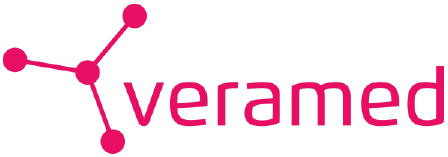Oncology trials starts have reached unprecedented levels, with a 56% increase from 2016 to 2021. From the 15,267 assets that were in development in 2021, 34% were oncology. However, an alarming concern arises when we question the involvement of market access experts and Statisticians in the complete development lifecycle. It is common practice for these stakeholders to join the discussion only after the trial design or even completion, resulting in a perceived separation between regulatory approval and market access.
The EU HTA Process and Market Access Challenges
Starting from 2025, compliance with the EU HTA process becomes mandatory for obtaining drug approval in the European market, beginning with oncology drugs. Preliminary projections based on the EUnetHTA21 Joint Assessment indicate that the new EU HTA process can exponentially increase the analyses required for market access. In this case study, the requested outputs quickly increase from 198 to over 4200. Furthermore, each additional population, outcome, and subgroup requested by a country can substantially multiply the necessary evidence. Considering these challenges, the workload for Statisticians and health economics and outcomes research (HEOR) experts is staggering. Scaling this to all 27 member countries necessitates early planning and resource allocation.

Translating Estimands to PICOs
The divergence between regulatory and market access requirements becomes evident when examining the Estimand and PICO frameworks. Estimands, introduced in the ICH E9(R1) Guidance Material, define the target of estimation for a trial. They focus on demonstrating the efficacy, safety, and quality of a drug. Conversely, PICOs (Population, Intervention, Comparator, Outcomes) serve as the framework for research questions in the context of EU HTA, emphasizing the comparative assessment of effectiveness. The misalignment between these frameworks, especially regarding intercurrent events, requires meticulous translation and consideration during evidence generation.
To navigate the evolving landscape of market access, collaboration between earlier phases and market access teams is imperative. Early planning of value dossiers, coupled with the flexibility to adapt to market changes, can significantly improve acceptance rates. However, linguistic barriers (Estimands vs. PICO) and the fragmented nature of regulatory and market access domains hinder effective communication. Bridging this gap necessitates close collaboration, knowledge sharing, and alignment of objectives.
Proactive planning is crucial in order to anticipate upcoming changes in the landscape. Manufacturers pulling their products from the market or the emergence of new competing therapies can significantly impact market access requirements. By staying ahead of these developments and adapting strategies accordingly, decision makers can optimize their chances of successful reimbursement and access for their innovative therapies.
Furthermore, decision makers must recognize the importance of generating additional evidence when necessary. The retrospective case study on melanoma treatment highlighted the significance of addressing mismatches between Estimands and PICOs. In situations where the predefined comparators may not align with market dynamics, alternative approaches such as indirect treatment comparisons can be employed to assess treatment efficacy. This flexibility in evidence generation demonstrates a proactive and adaptive approach to meet the diverse requirements of different healthcare systems.
In conclusion, key decision makers in the healthcare industry must recognize the pressing need for aligning regulatory approval and market access processes, especially in the dynamic field of oncology. The EU HTA process introduces complexities and increased analytical requirements for market access. To successfully navigate these challenges, early planning, collaboration, and proactive strategies are essential.
Close collaboration between different stakeholders, including regulatory, market access, and clinical teams, can ensure that all relevant comparators and populations are adequately covered in trial design and evidence generation. By involving market access experts and Statisticians from the outset of trial design, we can increase the chances of successful reimbursement and access.

If you’d like to learn more about how to best tackle the upcoming HTA regulation changes and the increasing challenges faced in ensuring successful market access, sign up to our upcoming webinar. Marius Sieverding, Data Scientist, Veramed, and Arthur Allignol, Senior Principal Statistician, Daiichi Sankyo, will share their insight on how best to collaborate in an evolving submission landscape from a Statistical and Clinical perspective.





